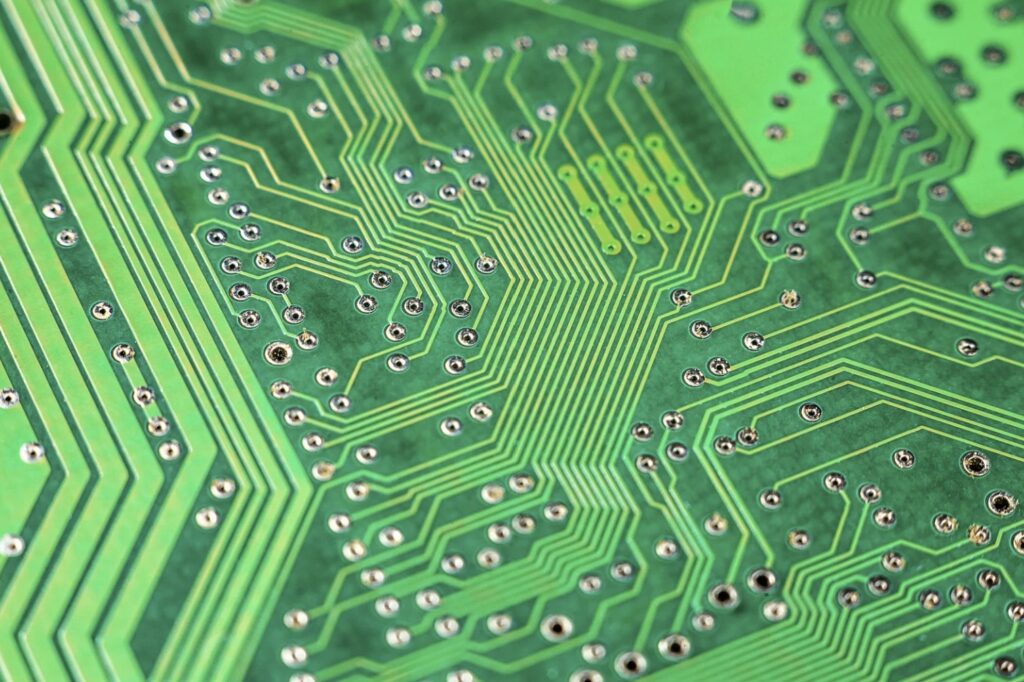As PCB design, PCB fabrication, and PCB manufacturing technologies advance, signal integrity has become an essential factor in ensuring the reliable performance of modern electronic products. One critical aspect of maintaining signal integrity in high-speed PCB design is length matching. As data rates increase and the complexity of circuits rises, the need for precise length matching becomes increasingly important to ensure that signals arrive at their destinations simultaneously, reducing skew, timing errors, and electromagnetic interference (EMI).
This comprehensive guide on Length Matching in PCB will explore its importance, examples, formulas, calculators, and tolerances for differential pairs and single-ended signals. Whether you are a design engineer working on high-speed interfaces, or a professional involved in PCB fabrication or PCB manufacturing, understanding length matching is crucial for delivering reliable and high-performance products.
What is Length Matching in PCB?
Length matching in PCB refers to the practice of equalizing the lengths of different traces that carry signals expected to arrive at the same destination simultaneously. This is commonly required in differential pairs, buses, and high-speed serial interfaces like DDR, PCIe, HDMI, and USB.
The objective of length matching is to prevent timing discrepancies caused by differences in signal propagation delays. When traces are not matched in length, signal skew can occur, leading to data errors, degraded signal quality, and system malfunctions.
PCB design for high-speed applications must incorporate length matching rules during the layout process, taking into account the physical length of traces and the effective electrical length influenced by the material properties of the PCB stack-up.
Why is Length Matching Important in PCB Design?
In modern PCB manufacturing, where signals travel at high speeds, even small mismatches in trace lengths can introduce significant timing differences. Some of the key reasons length matching is vital include:
- Signal Skew Minimization: Ensuring signals on parallel buses or differential pairs arrive simultaneously.
- Maintaining Differential Pair Integrity: Preventing noise and crosstalk by balancing differential signals.
- Reducing EMI and Crosstalk: Balanced signal arrival times minimize the emission of unwanted noise.
- Improving System Reliability: Ensures compliance with high-speed protocols and enhances data integrity.
Neglecting length matching in PCB design may result in costly errors during PCB fabrication, failed prototypes, or substandard PCB manufacturing outputs.
Length Matching in PCB Example
To illustrate the concept of length matching, let’s consider a practical example involving high-speed digital communication. Imagine a PCB designed to host a microcontroller interfacing with multiple peripherals via a high-speed bus, such as USB or Ethernet. When multiple signal traces are routed from the microcontroller to these peripherals, it’s important for these signals to arrive simultaneously to prevent data corruption.
For example, if one signal trace is routed to a peripheral that is 5 inches away from the microcontroller, and another trace to a different peripheral that is 6 inches away, the signal arriving at the second peripheral will be delayed by the time it takes for the signal to travel the additional inch. This delay can lead to timing errors, corrupted data, or even system failure.
To achieve length matching, designers can arrange the traces so that all signals arrive at their destinations as close to the same time as possible. This can involve employing various techniques such as:
- Adding meandered traces: By introducing bends in the traces, designers can increase their length without making significant changes to the overall layout.
- Adjusting route paths: Optimizing the paths taken by signals to ensure they are of similar lengths.
- Implementing vias strategically: Minimizing the use of unnecessary vias can help in controlling trace lengths.
Let’s take a practical length matching in PCB example using a DDR3 memory interface. DDR3 requires strict length matching between the clock, address, command, and data signals to maintain signal integrity.
DDR3 Example:
- Data lines are grouped in bytes and must be matched within each byte lane.
- The clock signals (CK+ and CK-) must be matched in length to ensure the differential clock maintains integrity.
- Address/command signals often need length matching relative to the clock signal.
Scenario:
- You have a set of data lines (DQ0 to DQ7).
- Your routing shows DQ0 is 1500 mils long, while DQ7 is 1450 mils.
- The design requires all lines in the group to be matched within a tolerance of ±10 mils.
Solution:
You need to add 50 mils of length (usually as a serpentine or meandered trace) to DQ7 to match DQ0’s length. This adjustment ensures all signals arrive at the memory chip simultaneously.
This is a simplified PCB design scenario, but in PCB manufacturing, every length difference could lead to timing mismatches, which is why length matching is essential.
Length Matching in PCB Formula
Accurate length matching in PCB design relies on understanding the relationship between trace length and signal propagation delay. Here’s the basic formula used to calculate the time delay of a signal traveling along a PCB trace:
Propagation Delay (tpd) = Length (inches) / Velocity of Propagation (Vp)
Key Elements:
- Length is the trace length that needs to be matched.
- Vp (Velocity of Propagation) is determined by the dielectric constant (Dk) of the PCB material.
- Vp can be calculated as:
Vp = (c / √Dk)
Where c is the speed of light in vacuum (approximately 11.8 inches/ns).
Example Calculation:
- Assume Dk of FR-4 is 4.2.
- Vp = 11.8 / √4.2 = 5.75 inches/ns
- If you have two traces with lengths 5 inches and 5.1 inches,
The difference in time delay:
Δtpd = (5.1 – 5) / 5.75 = 0.017 ns (17 ps)
Even a 100 mil (0.1 inch) difference can result in timing differences of tens of picoseconds, which is significant at GHz frequencies. PCB design tools use these calculations to implement length matching accurately.
Length Matching in PCB Calculator
Many PCB design software packages include length matching calculators or tools to simplify the process. These tools automatically calculate the necessary trace lengths, propagation delays, and suggest the amount of serpentine routing required.

Features of a Length Matching Calculator:
- Calculates effective trace lengths, including jogs and curves.
- Converts length differences into time delays.
- Considers stack-up parameters such as dielectric constant (Dk).
- Suggests differential pair spacing and length matching tolerance.
Examples of PCB Design Software with Length Matching Tools:
- Altium Designer: Has differential pair length tuning and interactive length matching wizards.
- Mentor Graphics Xpedition: Advanced length and timing analysis for high-speed design.
- Cadence Allegro: Industry standard for high-performance length matching with timing constraint management.
- KiCAD: Offers length tuning tools, though more manual than premium software.
For designers working with PCB fabrication houses, using these calculators ensures compliance with manufacturing guidelines and improves first-pass success rates.
Differential Pair Length Matching Tolerance
Differential pairs are two complementary signals routed together in PCB design to transmit data with minimal noise. For the differential pair to function correctly, the lengths of the two traces must be closely matched.
Typical Tolerances:
- For low-speed signals (below 1 Gbps):
±10 mils (0.254 mm) is generally acceptable. - For high-speed signals (1 Gbps and above):
Tolerance tightens to ±5 mils (0.127 mm) or even ±2 mils (0.050 mm) depending on protocol requirements (PCIe, HDMI, USB 3.0, etc.).
Why Tight Tolerances Matter:
Length mismatches introduce skew, which can degrade signal integrity and increase jitter. In differential signaling, skew causes the two signals to become misaligned, reducing noise immunity and potentially leading to data corruption.
During PCB manufacturing, tight control of trace widths, lengths, and spacing ensures these tolerances are maintained. Advanced PCB fabrication processes, such as laser direct imaging (LDI) and automated optical inspection (AOI), play key roles in achieving precise length matching.
Signal Length Matching
In addition to differential pairs, signal length matching is essential for parallel buses and clock signals.
Where Signal Length Matching Is Required:
- Memory Interfaces: DDR, DDR2, DDR3, DDR4
- Parallel Buses: PCI, PCIe, GPIOs, data/address lines
- High-Speed Interfaces: USB, Ethernet, LVDS
Guidelines for Signal Length Matching:
- Match clock signals to their associated data/address/control lines.
- Match data groups within specific tolerances based on protocol timing requirements.
- Use delay tuning structures such as serpentine traces or jogs to achieve length matching.
PCB design rules typically specify the length matching constraints, which are verified through design rule checks (DRCs) before PCB fabrication. These rules are based on signal timing analysis and manufacturer capabilities.
Advanced Considerations for Length Matching in PCB Design
Stack-Up Configuration:
The PCB stack-up affects signal propagation. Controlled impedance traces and differential pairs depend on consistent stack-up configurations, which include layer thickness, dielectric properties, and copper weight.
Material Selection:
High-speed designs often require advanced materials with lower Dk and Df values to reduce propagation delay and signal loss. Rogers, Isola, and other materials offer better performance than traditional FR-4, particularly for RF and microwave applications.
Manufacturing Tolerances:
Partnering with PCB manufacturing experts ensures that the physical tolerances required for length matching are achievable. Manufacturers must guarantee layer-to-layer alignment, consistent etching, and accurate via placement.
Why Length Matching in PCB Matters for PCB Fabrication and Manufacturing
In PCB fabrication, achieving the precise trace lengths specified during PCB design requires highly controlled processes. Length mismatches can arise from etching variations, layer misregistration, and copper plating inconsistencies. Manufacturers use advanced equipment and techniques to ensure that the boards produced adhere to the strict tolerances required for length-matched signals.
Close collaboration between designers and PCB manufacturing teams is critical. Design for Manufacturability (DFM) practices help ensure the layout meets production capabilities, reducing the risk of costly errors and delays.
At Arshon Technology, our PCB design and PCB fabrication services emphasize the importance of length matching in high-speed designs. We work closely with our clients to ensure optimized layouts that translate into reliable, high-performance boards during PCB manufacturing.
Conclusion
Length matching in PCB is a critical aspect of high-speed PCB design, directly impacting signal integrity, timing accuracy, and overall system reliability. Understanding the principles behind length matching, using accurate formulas and calculators, and working within tolerance guidelines for differential pairs and signal groups are essential practices for modern PCB fabrication and PCB manufacturing.
By paying close attention to length matching requirements, design engineers can prevent data errors, ensure compliance with high-speed interface standards, and deliver robust electronic products to market. For companies looking to develop reliable, high-performance PCBs, partnering with experts like Arshon Technology ensures that length matching and other signal integrity challenges are addressed with precision and care.
